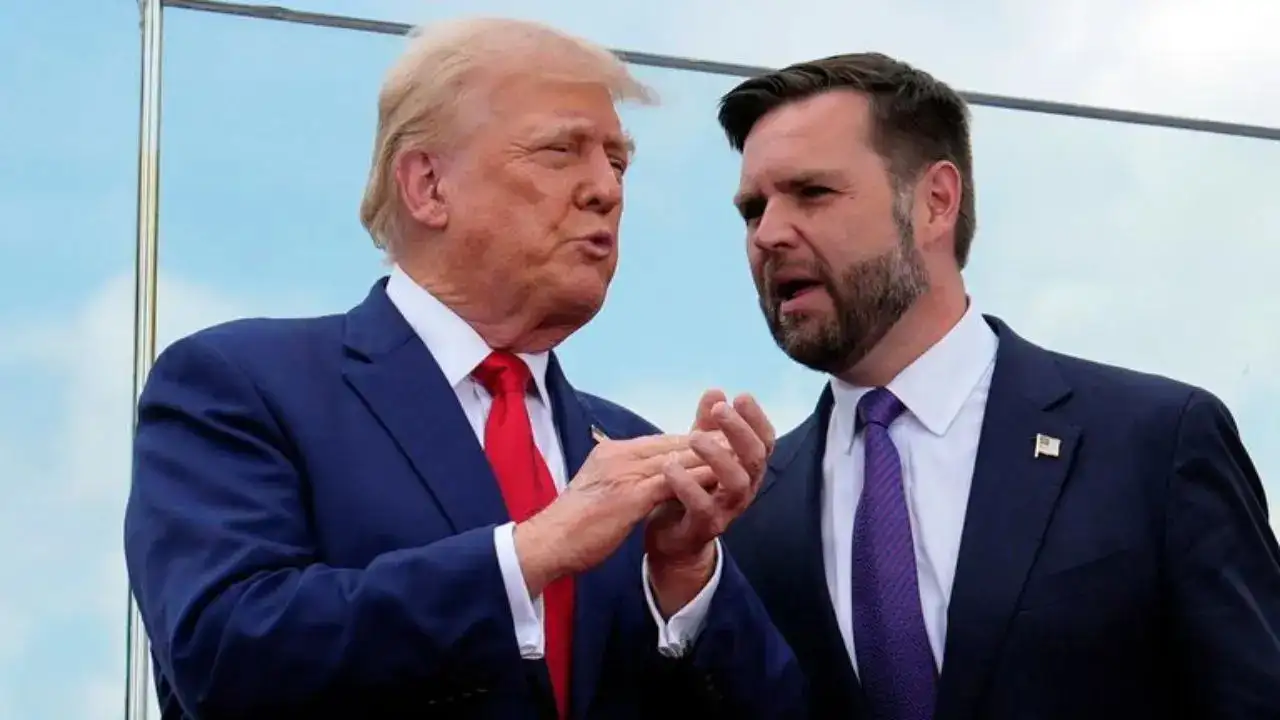US Government Shutdown: What Is A Continuing Resolution And How The Trump Administration Will Operate Without It
By Diana George
Copyright timesnownews

The US government entered a partial shutdown at 12:01 AM Wednesday after lawmakers failed to pass a funding measure to keep operations running, marking the 21st funding lapse since the 1977 fiscal year. Both Republican and Democratic proposals to extend government spending by continuing the current Resolution (CR) beyond Tuesday failed in the Senate during last-minute negotiations. “Both proposals failed,” Senate Minority Leader Chuck Schumer said. “We want to sit down and negotiate, but the Republicans can’t do it in their partisan way, where they just say it’s our way or the highway.” The White House Office of Management and Budget (OMB) instructed federal agencies to “execute their plans for an orderly shutdown”. Under these instructions, agencies are required to furlough “non-excepted” employees while excepted staff – those who protect life and property – continue to work but will not receive pay until the shutdown ends. What Is A Continuing Resolution? Continuing Resolutions, or CRs, are temporary funding measures Congress uses when annual appropriations bills are not passed by the start of the fiscal year on October 1. They act as “stopgaps” to prevent a government shutdown and allow federal operations to continue while lawmakers negotiate full-year appropriations. CRs provide stability but are considered temporary, often leaving agencies unable to plan for the full year. Fiscal year 2025 has relied on multiple CRs, including extensions through March 14, 2025, with additional supplemental funding, but Congress has yet to enact the full set of 12 appropriations bills. An AP report states that while temporary funding measures often avoid shutdowns, they also reflect the failure of lawmakers to reach an agreement on some or all appropriation bills for a full fiscal year. Who Continues to Work During a Shutdown? Many federal employees will be furloughed, but critical programs continue. FBI investigators, CIA officers, air traffic controllers, and members of the Armed Forces remain on duty. Social Security, Medicare, and veteran benefits continue to be paid. “The department will continue to defend the nation and conduct ongoing military operations,” Pentagon guidance states. “Military personnel on active duty, including reserve component personnel on Federal active duty, will continue to report for duty and carry out assigned duties.” Health and Human Services (HHS) will furlough about 41% of its 80,000 employees. The Centers for Disease Control and Prevention (CDC) will continue monitoring disease outbreaks, but research into health risks and preventative measures will pause. At the National Institutes of Health (NIH), patient care continues for enrolled participants, though new studies are on hold. The Food and Drug Administration (FDA) warned that “ability to protect and promote public health and safety would be significantly impacted, with many activities delayed or paused,” including accepting new drug and medical device applications. At the National Park Service, decisions about site closures remain pending. In previous shutdowns, limited staffing led to vandalism and other issues at parks including Yellowstone and Yosemite. Smithsonian museums, research centers, and the National Zoo will remain open through at least Monday, Oct. 6. How Will Federal Workers Be Affected? The Congressional Budget Office estimates roughly 750,000 federal employees could be furloughed each day, with daily compensation totaling about $400 million, AP reported. Those furloughed will eventually receive back pay, but the timing of checks may create financial stress for families. Service members will also be compensated retroactively. Some federal workers, however, face potential layoffs. A provocative OMB memo suggested that agencies whose programs are “not consistent with the President’s priorities” may issue reductions-in-force, eliminating positions permanently rather than furloughing employees. Trump warned Democrats, “We can do things during the shutdown that are irreversible, that are bad for them and irreversible by them. Like cutting vast numbers of people out, cutting things that they like, cutting programs that they like.” Federal contractors, hourly workers, and National Guard troops deployed to cities including Washington, D.C., Oregon, and Tennessee may have to work without pay. “National Guard members supporting JTF-DC will continue to execute their current mission and our commitment to the welfare and safety of DC residents is resolute,” the D.C. Guard task force said. How Will the IRS, Mail, and Other Services Operate? The US Postal Service, funded through its own revenue, will continue to operate normally. Treasury Department guidance allows the IRS to maintain operations for up to five business days using funding allocated from the Inflation Reduction Act, ensuring taxpayers can meet October deadlines. Social Security, Medicare, and Medicaid payments continue, though related services may experience delays. Federal courts may see delayed hearings, though the Supreme Court remains largely unaffected because justices are guaranteed pay under the Constitution. The Justice Department will continue essential law enforcement and national security operations, though some civil litigation could be postponed. Economic Impact Short shutdowns have limited immediate effects, but extended closures create uncertainty. Phillip Swagel, director of the Congressional Budget Office, said, “The impact is not immediate, but over time, there is a negative impact of a shutdown on the economy.” Goldman Sachs analysis suggests each week of a governmentwide shutdown reduces economic growth by roughly 0.15–0.2 percentage points, with recovery expected after funding resumes. The 2018-2019 shutdown, the longest in US history at 35 days, caused $3 billion in lost economic activity, disrupted federal employee livelihoods, and delayed essential services, ABC News reported. US Senate Expected To Vote Again As negotiations continue, the Senate is expected to vote again on the same two measures that failed Tuesday. Until lawmakers reach a bipartisan funding agreement, federal employees and millions of Americans relying on government services must navigate the impacts of the shutdown while essential operations continue under strict contingency plans. Get Latest News Live on Times Now along with Breaking News and Top Headlines from US News and around the World.



